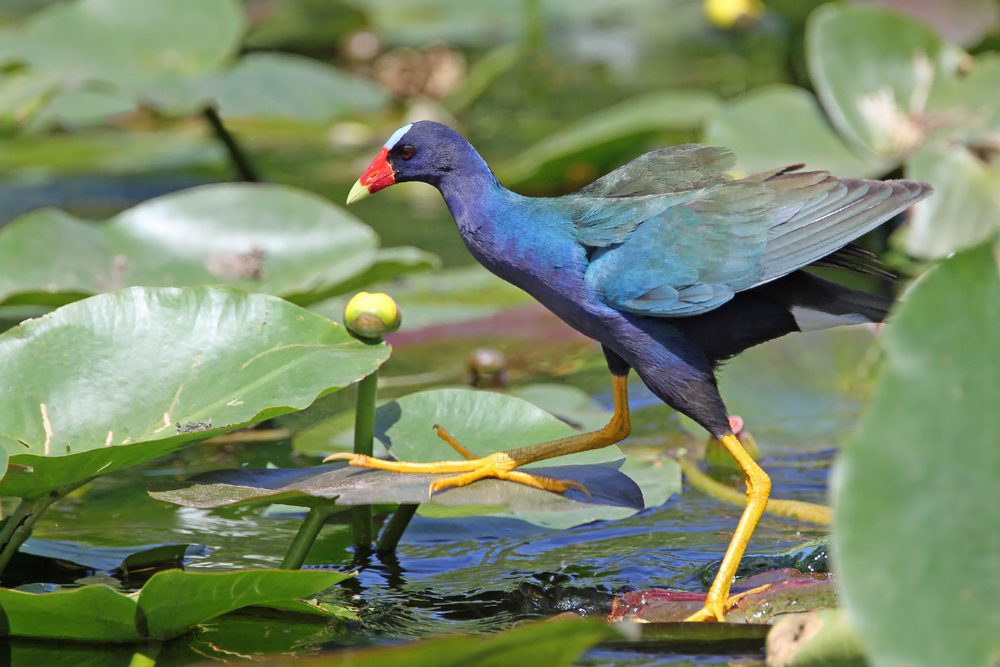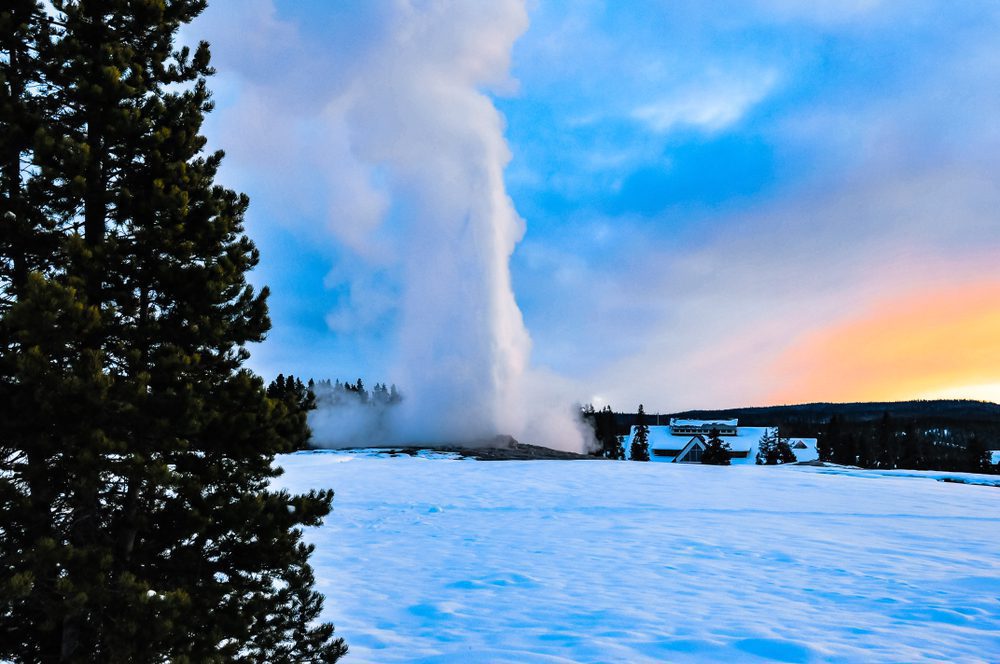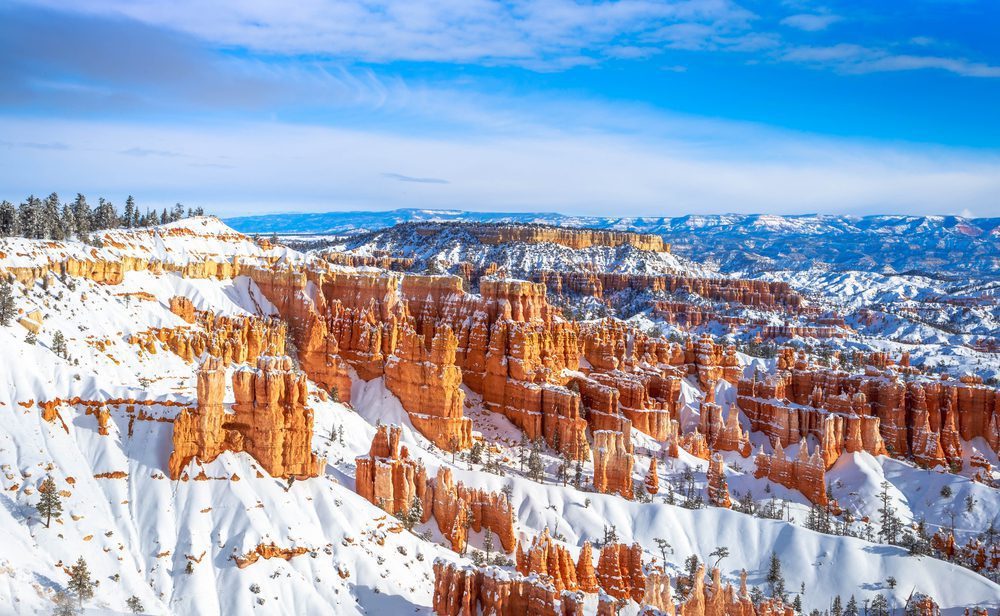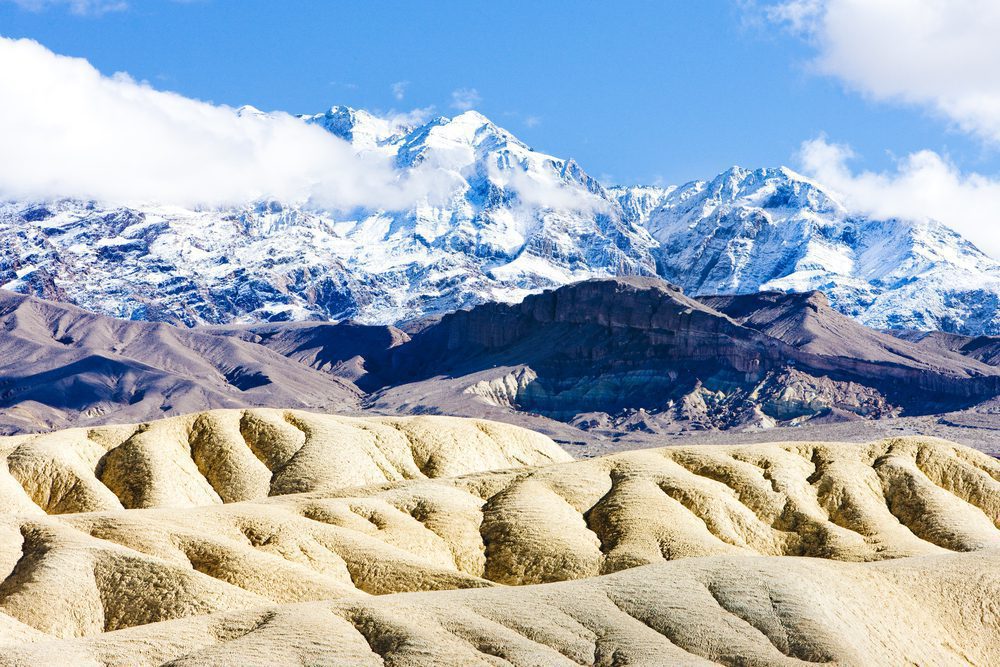Let’s be honest–there’s never a bad time to visit a national park. Whether you’re taking in their spectacular natural wonders in the middle of summer or in the dead of winter, you’re going to find something unique about your experience that inspires you. There are, however, some national parks across the United States that offer an entirely different experience when visited during snowy months.

1) EVERGLADES NATIONAL PARK, FLORIDA
For the Everglades National Park, the months of November through April are its subtropical dry season. As opposed to the wet season which is extremely hot and when it rains often, the subtropical dry season allows visitors to enjoy the park in comfortable 70-degree weather, without rain, and without the large quantities of insects that typically frequent the wetlands. Additionally, because there’s less rain in the winter, wildlife becomes more concentrated at the various watering holes across the land. This gives tourists a much better chance of spotting an alligator or even a rare bird on their visit.

2) YELLOWSTONE, WYOMING
This already beautiful national park grows even more beautiful when it’s coated with a fresh dusting of snow. The geothermal features in the national park create a spectacular view when blended with the frigid winter air. The geysers, steam vents, and hot vents shoot steam up to 1,000 feet high, which both coats the air in a layer of fog and coats the trees and surrounding plant life entirely in a layer of frost. The park also isn’t nearly as busy in the winter season, so it’s the perfect time to visit Old Faithful while avoiding the big crowd.

3) BRYCE CANYON NATIONAL PARK, UTAH
Bryce Canyon National Park already contains unique and stunning scenery with its reddish-orange limestone spires called hoodoos. In the winter, however, the sight becomes even more spectacular as the hoodoos are dusted with a layer of snow. The way that the bright white layers of snow blend with the bright coloring of the rocks create a truly picturesque vista. Additionally, if you time your visit in accordance with a new moon phase, you’re in for some truly magical stargazing.

4) DEATH VALLEY NATIONAL PARK, CALIFORNIA
This landscape contains salt flats, badlands, and miles of sand dunes. Its average temperature during the warmer months is 108 degrees Fahrenheit, so needless to say the park is much too hot for a summer visit. The temperature in January, however, has an average daytime high of 67 degrees (72 degrees in February) making winter the perfect time to check this national park off of your bucket list.

5) ROCKY MOUNTAINS, COLORADO
Between its mountain peaks, tall snow-covered trees, and calm water reflecting the entire scene back a second time, Rocky Mountain National Park is truly a winter wonderland. It’s also the best time of year to spot some of the area’s wildlife like the elk and moose, as they become more active in the winter months. The area is also full of winter activities from sledding at Hidden Valley to skiing at Copper Mountain to snowshoeing at Emerald Lake.







